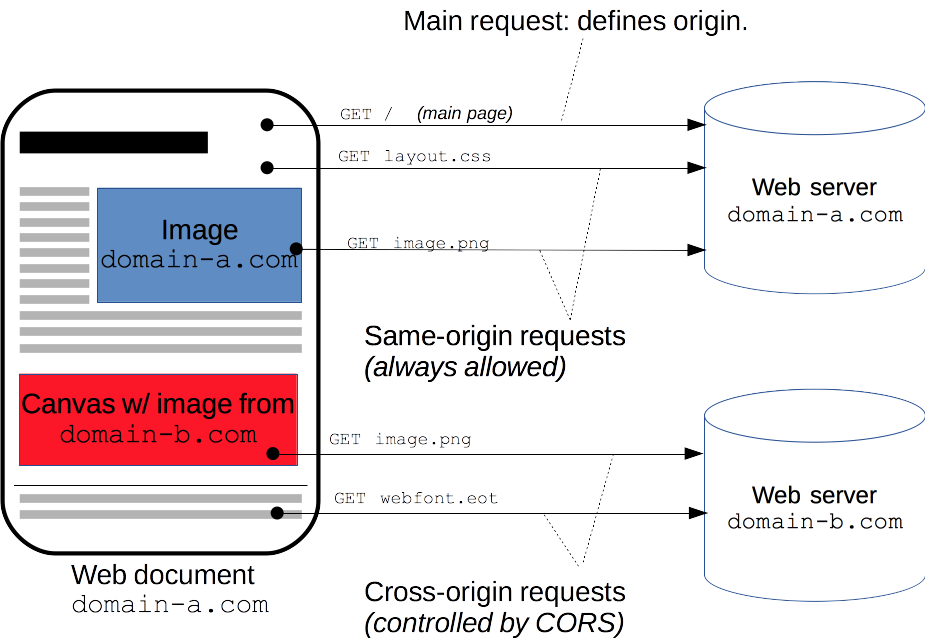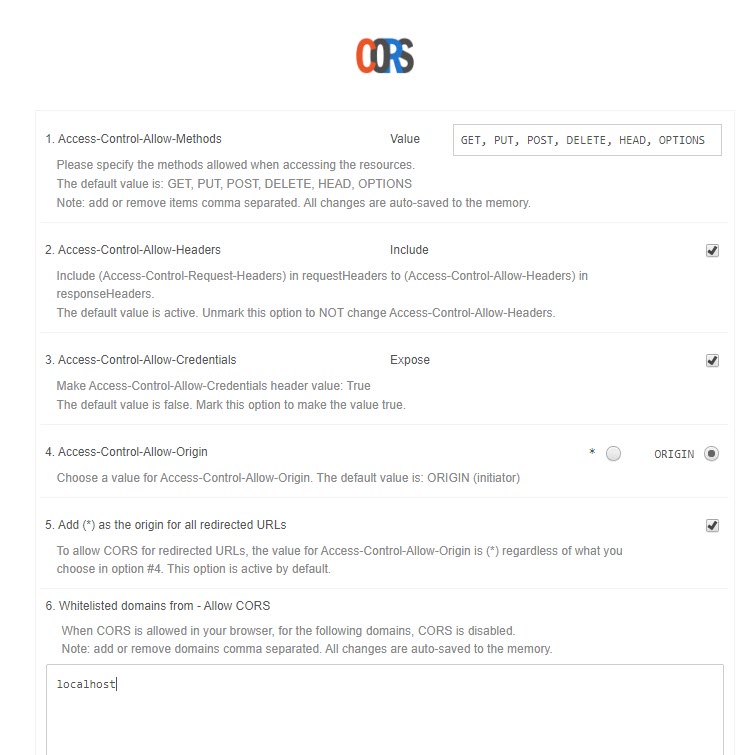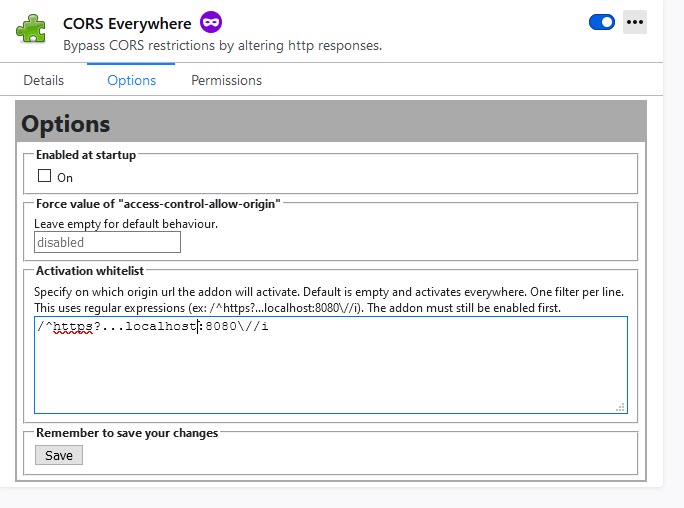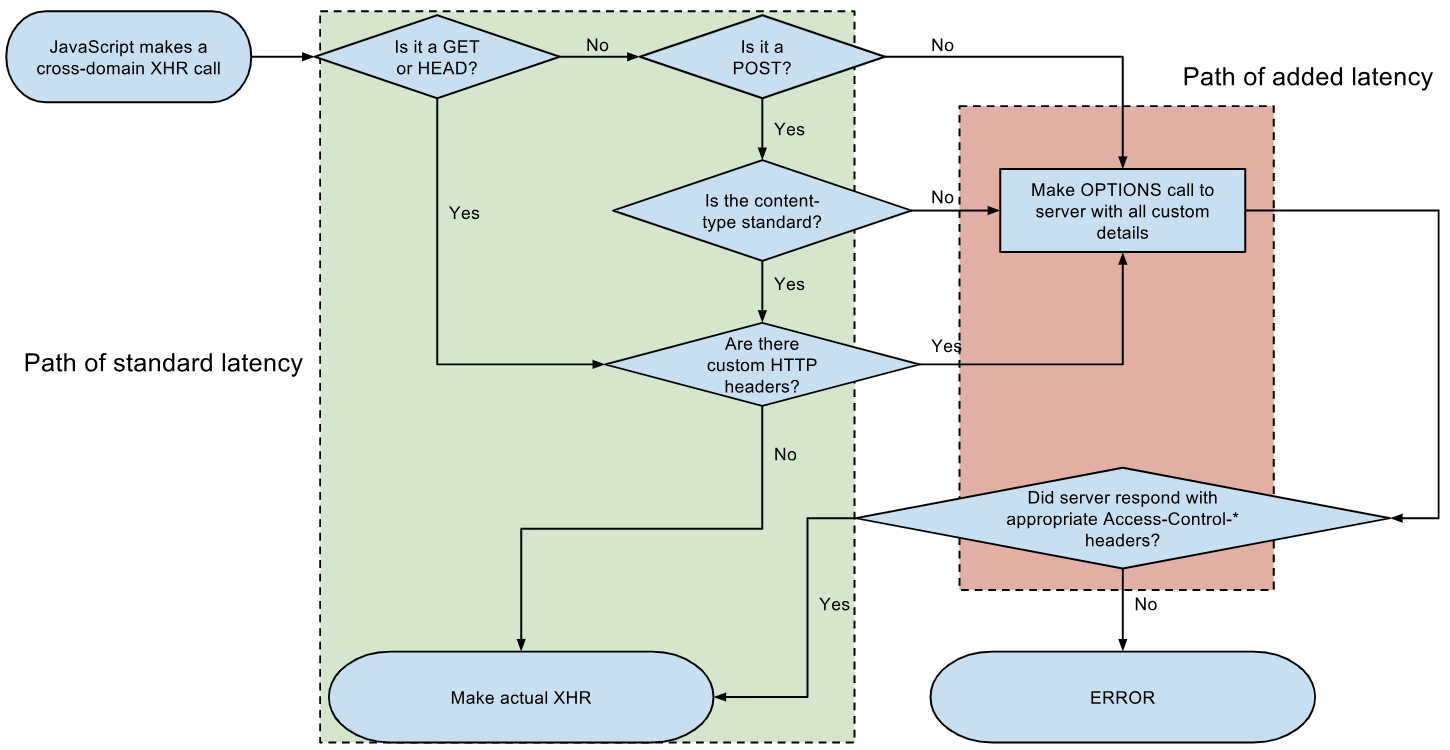Cross-Origin Resource Sharing - CORS (A.K.A. Cross-Domain AJAX request) is an issue that most web developers might encounter, according to Same-Origin-Policy, browsers restrict client JavaScript in a security sandbox, usually JS cannot directly communicate with a remote server from a different domain. In the past developers created many tricky ways to achieve Cross-Domain resource request, most commonly using ways are:
- Use Flash/Silverlight or server side as a "proxy" to communicate
with remote.
- JSON With Padding (JSONP).
- Embeds remote server in an iframe and communicate through fragment or window.name, refer here.
Those tricky ways have more or less some issues, for example JSONP might result in security hole if developers simply "eval" it, and #3 above, although it works, both domains should build strict contract between each other, it neither flexible nor elegant IMHO:)
W3C had introduced Cross-Origin Resource Sharing (CORS) as a standard solution to provide a safe, flexible and a recommended standard way to solve this issue.
The Mechanism
From a high level we can simply deem CORS as a contract between client AJAX call from domain A and a page hosted on domain B, a typical Cross-Origin request/response would be:
DomainA AJAX request headers
Host DomainB.com
User-Agent Mozilla/5.0 (Windows NT 6.1; WOW64; rv:2.0) Gecko/20100101 Firefox/4.0
Accept text/html,application/xhtml+xml,application/xml;q=0.9,*/*;q=0.8,application/json
Accept-Language en-us;
Accept-Encoding gzip, deflate
Keep-Alive 115
Origin http://DomainA.com
DomainB response headers
Cache-Control private
Content-Type application/json; charset=utf-8
Access-Control-Allow-Origin DomainA.com
Content-Length 87
Proxy-Connection Keep-Alive
Connection Keep-Alive
The blue parts I marked above were the kernal facts, "Origin" request header "indicates where the cross-origin request or preflight request originates from", the "Access-Control-Allow-Origin" response header indicates this page allows remote request from DomainA (if the value is * indicate allows remote requests from any domain).
As I mentioned above, W3 recommended browser to implement a "preflight request" before submiting the actually Cross-Origin HTTP request, in a nutshell it is an HTTP OPTIONS request:
OPTIONS DomainB.com/foo.aspx HTTP/1.1
If foo.aspx supports OPTIONS HTTP verb, it might return response like below:
HTTP/1.1 200 OK
Date: Wed, 01 Mar 2011 15:38:19 GMT
Access-Control-Allow-Origin: http://DomainA.com
Access-Control-Allow-Methods: POST, GET, OPTIONS, HEAD
Access-Control-Allow-Headers: X-Requested-With
Access-Control-Max-Age: 1728000
Connection: Keep-Alive
Content-Type: application/json
Only if the response contains "Access-Control-Allow-Origin" AND its value is "*" or contain the domain who submitted the CORS request, by satisfying this mandtory condition browser will submit the actual Cross-Domain request, and cache the result in "Preflight-Result-Cache".
I blogged about CORS three years ago: AJAX Cross-Origin HTTP request





http://siteA/MyCode.js. – Deaminate